






 The rules for challenging to a duel and the match procedure were determined by the dueling code.
The rules for challenging to a duel and the match procedure were determined by the dueling code.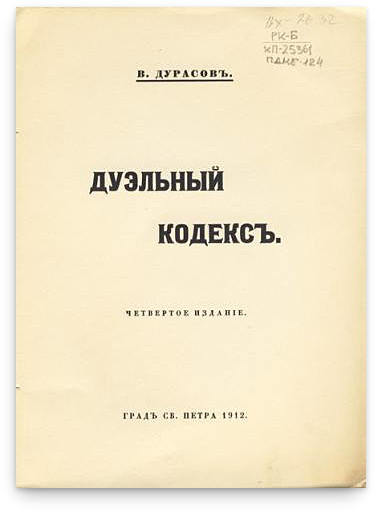

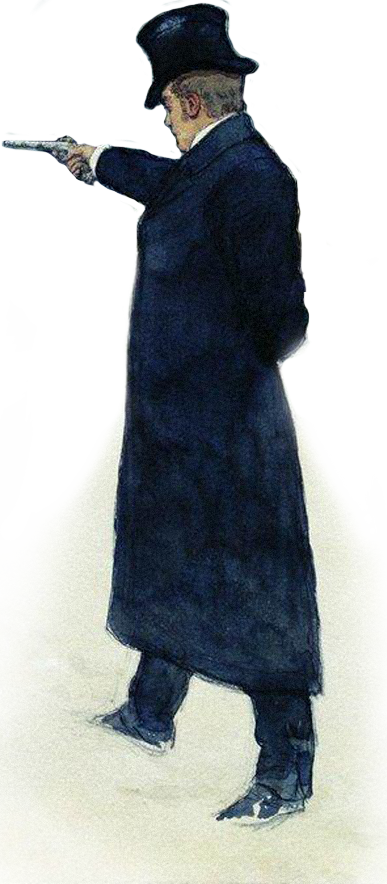
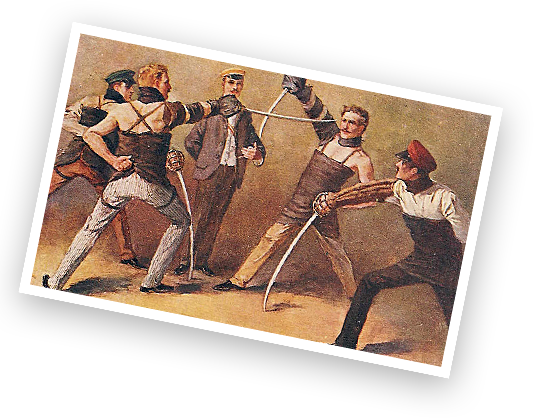

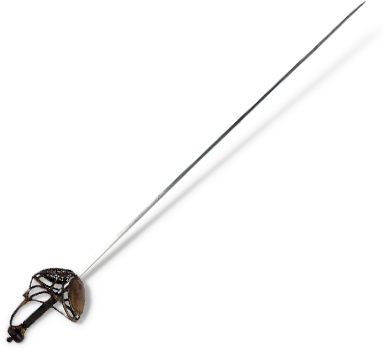
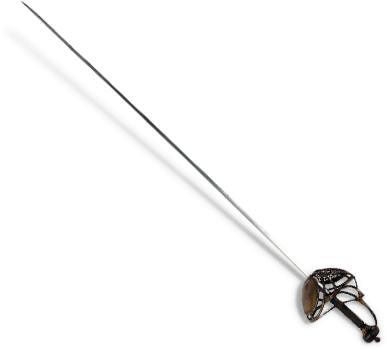
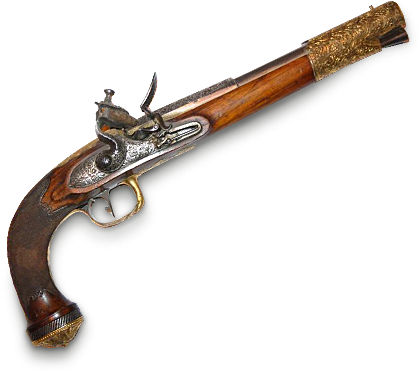
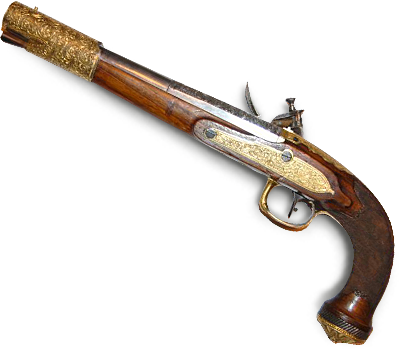
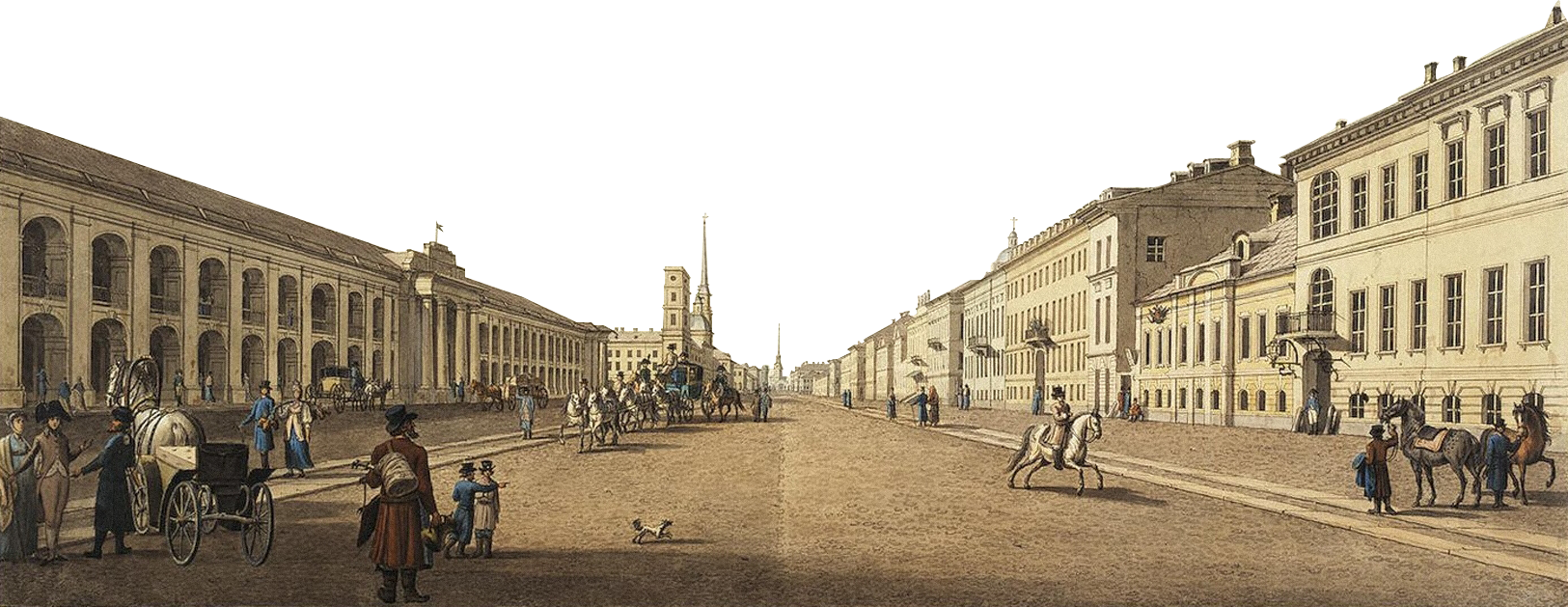

 In the first half of the 19th century, dueling pistols were made in Tula by Alexey Spiridonovich Babyakin, Nikita Yakovlevich Krapiventsov and Gavrila Gavrilovich Mikhailov.
In the first half of the 19th century, dueling pistols were made in Tula by Alexey Spiridonovich Babyakin, Nikita Yakovlevich Krapiventsov and Gavrila Gavrilovich Mikhailov.
 Skilled craftsmen decorated the pistol grips with plates of precious metals and often engraved a monogram of the weapon’s owner. Each gun was truly a work of art.
Skilled craftsmen decorated the pistol grips with plates of precious metals and often engraved a monogram of the weapon’s owner. Each gun was truly a work of art.


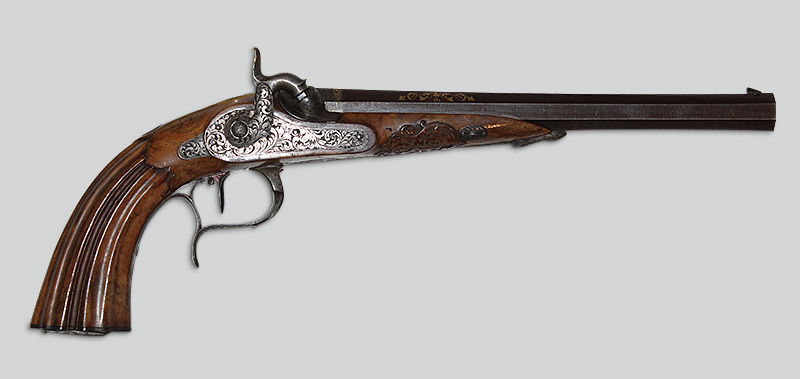
This copy was handed over to the Tula Museum of Weapons on May 15, 1967 by Arkady Mikhailovich Fateev (Moscow), a retired Colonel, honored master of parachuting. According to him, he was one of the first to test parachutes, and in 1936 he received this pistol No. 2 for his 5-year excellent service as a gift from the Secretary of the Party Bureau of the Political Party Association of Kanshin Border Guards, who was the owner of a pair of dueling pistols and kept the pistol No. 1 at himself.
155. After receiving the insult, the offended party must declare to his opponent: “Sir, please wait for the seconds to come from my side”. If the opponents are strangers to each other, they exchange cards and addresses.
156. A challenge can be followed only immediately after the offense, but can be sent within 24 hours, and this period may be extended if there are valid reasons.
157. If a challenge is not followed immediately after the offense, it should be tossed not in person but in writing or through the seconds.
158. After an offense and challenge all personal relations between opponents should be ceased, and they can communicate with each other only through seconds.
159. Opponents shall not meet each other for the purpose of a challenge, establishing conditions for the duel, or attempts to reconcile on any pretext.
369. When you fight a duel with pistols, the site should be chosen by the seconds before the duel and communicated in the negotiations protocol.
370. When you fight a duel with pistols, choose a completely open terrain with smooth and solid ground.
371. Opponents should equally suffer from the disadvantages of a chosen locality, weather and other external conditions.
372. Opponent places are always distributed by lot.
215. Arriving at the site of the match, opponents bow to each other and to the opponent’s seconds.
216. Every conversation between opponents is not admitted. If one party has something to tell the other, it should be done by the seconds.
217. After receiving the weapons, the opponents must be silent throughout the duel. All sorts of comments, jeers, shouts or screams should be absolutely avoided.
218. Opponents should unquestioningly obey all the orders of seconds in the course of a duel.
219. It is deemed as extremely impolite to come late to the duel site. The party who has arrived in time should wait for his opponent for a quarter of an hour. After this period, the party who has arrived first has a right to quit the site, and his seconds should draw up a protocol indicating the non-arrival of the opponent. The opponent who has arrived first may wait another quarter of an hour.
220. If some insurmountable barrier deprives one of the opponents of the possibility to be on time, his seconds shall as soon as possible warn the opponent’s seconds and to come to terms with them regarding appointment of another time for the duel to take place.
221. In case of a pointblank rejection of the opponent who has arrived first to appoint another time for the duel or in doubt as to the legality of the declared cause of delay, the question is passed over to the court of honor.
389. There are two systems for the choice of pistols for the duel:
1) opponents use their private weapon;
2) opponents do not use their private weapon.
390. In the first case each opponent shall bring and make use of his own pair of pistols.
391. In the second case each opponent’s seconds shall bring a pair of pistols unfamiliar for the opponents, and the pair of pistols should be chosen by lot.
392. The right to use personal weapon belongs to the offended party, with the condition to allow the opponent to use the same right.
393. For offenses of the first or second degrees the seconds shall agree upon the method for choosing pistols; by mutual consent they have a right to decide whether to choose pistols by drawing lots or to give opponents the right to use personal weapon.
394. If each of the opponents uses their own weapons, then both pairs of pistols may not be exactly the same, but their caliber must be the same, both pairs of pistols must be rifled or smoothbore, and both pairs should be with or without a barrel sight.
395. If the opponents do not use personal weapons and the pair of pistols is chosen by lot, the pistols of each pair should be identical.
396. The opponent whose weapon was not chosen by lot should choose any pistol of the pair designated for the duel by lot.
397. The opponent who has not brought his own pistols to the match site and who will use the opponent’s weapon also has a right to choose a pistol.
Pistol properties required for duels
398. Pistols should be of an ordinary model, i.e. meeting a number of the requirements below.
399. Otherwise, the opponent’s seconds have a right to refuse this pair of pistols and demand the use of ordinary pistols of a standard and common configuration for the convenience of their principal.
400. Opponent’s seconds have a right to refuse those pistols poorly made and inconvenient.
401. Pistols should be single-barrel, not for center-fire match, but muzzle-loading.
402. Pistols can be smooth or rifled.
403. Pistols can be with or without a barrel sight.
404. Pistols are loaded right before the duel at the match site.
405. Pistols can be loaded with use of one of these options:
1) by seconds;
2) by a third party specially invited for this (rarely).
406. Seconds determine the choice of the pistol loading option.
463. The head of duel reminds each second of his role and appoints an assistant if he is elected from among the seconds.
464. The head measures the distance and determines opponents’ places by lot.
465. If the opponents use personal weapons, the head determines the readiness of both pairs of pistols.
466. If the opponents do not use personal weapons, the head determines the pair of pistols for dueling by lot.
467. Junior seconds accompany the seconds towards their places distributed by lot.
468. The head of a duel stands at a side of the opponents at equal distance from each of them, ten steps from the line connecting the opponents. The second acting as a head assistant stands at the opposite side and the same distance from the opponents.
469. The remaining two seconds are 15 steps from the opponents so that a second of the opposing party was near each of the opponents.
470. If the head of a duel was not chosen from among the seconds, he should move to the same place and he does not have an assistant. Both opponent’s seconds should stand near each of the opponents 15 steps from each other, one to the right, and the other to the left.
471. All seconds and the head have pistols in hands.
472. As soon as everybody has occupied his proper place, the head of a duel takes a pair of charged pistols designed for the duel, inspects them quickly again, shows them to the seconds, and having checked that everybody stands at his proper place turns to the opponents with the following reminder: “Gentlemen, you are aware of the terms of the duel, you get them signed and approved. I would like to remind you that when I give you the pistols honor obliges you not to make any movements until I say “start”. Similarly, you should immediately drop the pistols on the command “stop””. After saying this, he gives the pistols to the opponents, and the latter are required to keep their barrels up.
473. After that, having taken a quick glance at the opponents’ and seconds’ mutual arrangements, the head moves to his place and asks the opponents if they are ready. Upon an affirmative answer he gives a command about the duel start, meanwhile keeping an eye on the clock.
474. After the start of the duel, the seconds do not remain passive to let the head alone to supervise the duel at its discretion. The head of the duel is appointed mainly to explain the rules and avoid confusion.
475. The seconds and the head rights and liabilities are equal: these persons had been chosen to establish the terms fixed by the protocol and to make sure these terms are adhered to all the way.
476. If the head of a duel evaded the rules, then the seconds shall correct him.
477. Each of the six legitimate duels with pistols as a complete unit always consists in exchanging two shots by the opponents.
478. With the mutual consent of the Opponents have the right to agree to repeat the known duel type twice or thrice, or repeat it until one of the opponents had been before applying one of the opponents had been deadly wounded.
479. In case it is necessary to repeat the duel, the next duel should follow the previous one, but each time with all rules adhered to.
480. Provisions for multiple duel cases should be obligatorily entered in the protocol; otherwise, the seconds are required to prevent the continuation of the duel after the opponents had shared two shots.
A misfire
481. A misfire is considered in one case as a shot and not considered as a shot in another case.
482. A misfire is counted as a shot in those cases where the calculation of time begins with the respective command, and in this case the opponent whose pistol misfired is considered as such that had made a real shot.
483. A misfire is not counted as a shot in cases where the calculation of time begins with the first shot and in duels with consecutive shots, and the opponent whose gun misfired has a right to request the pistol reloading.
484. In case when a misfire is not counted as a shot or it was a misfire of the pistol of the opponent who fired first, such an opponent shall notify thereof, and the head should immediately stop the duel and reload the pistol. After this the duel is resumed with all formalities and rules adhered to.
485. In case when a misfire is not counted as a shot or it was a misfire of the pistol of the opponent who fired second, the head shall reload the pistol and provide the opponent with the predetermined legal term for the right of shot.
| Caliber | 14,0 mm |
| Total length | 40.0 cm |
| Barrel length | 27.0 cm |
| Weight | 0.95 kg |